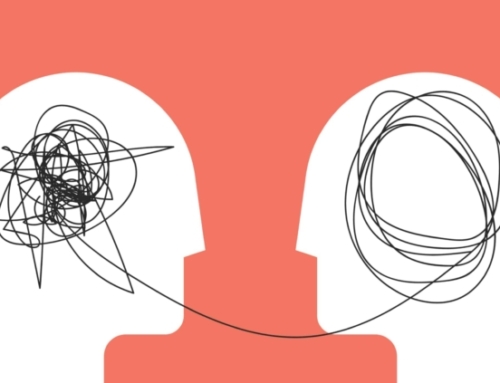When we think of work burnout, we often imagine that the negative effects accrue from high-paced and high-stress jobs, ones in which a high patient frequency and paperwork burden leaves the clinician falling behind and starved for time. This is indeed a common cause of burnout.
Today, however, I focus on the ‘quiet’ contributors to burnout – boredom and disappointment – contributors that often compound slowly but whose effects are often just as deleterious.
Boredom occurs when the clinician feels caught in a cycle of repetition of the same, in which no surprises are experienced, in which every patient becomes a ‘type’ with the same stories to tell. The bored clinician focuses on going through their diagnostic checklists, often feels confirmed in their initial impression, and doles out the meds appropriate to the diagnosis as established. Another day of eternal recurrence.
This is not to say that all the above is bad. Clinical acumen and anticipation of problems and potential solutions is good. Often, though, it is not enough.
The solution to burnout borne of boredom is simply to reverse its cause: If every patient sounds and looks the same, then the bored clinician can choose to stop hearing and seeing every patient as the same. It is easy to elide each person’s uniqueness by categorizing them by their presenting mental illness. An extreme example of this occurred when a psychiatrist attending my oral board course – back in the day – interviewed a patient with chronic schizophrenia. During his presentation he kept referring to the patient as a ‘chronic schiz.” I told him he recouped the entire cost of the course when I (figuratively) slapped him upside the head and told him never to say that again. He wasn’t a bad guy; it sounded like this was just the way the clinicians at his community mental health clinic referred to their patients. It didn’t sound like a healthy environment.
In less extreme ways, though, we all can fall into this ‘elision’ of uniqueness and ‘erasure’ of the person presenting with mental illness. It becomes easy to inquire about aspects of the mental illness and then to treat the mental illness. The individual with that mental illness disappears behind it.
The problem of boredom is that it is self-fulfilling: To be bored is to expect the same and to expect the same is to experience the same. One sees what one expects to see and becomes blind to that which one doesn’t expect to see.
So, how does a bored clinician become meaningfully engaged? By forcing oneself to focus on each patient as an individual, to allow their uniqueness, their selfhood, to shine forth. It means to focus on the person and only secondarily on their mental illness and, assuredly, their many other problems. It is to allow the patient to share their perspective on what is going wrong, what they want, what they believe they can do for themselves, and what they need help with. I think we can all recognize the difference in tenor between a conversation and what is, in effect, a review of systems, symptoms, and other problems.
Perhaps the most useful intervention a clinician can administer to a patient is to engage in a genuine relationship with that person, someone who, by virtue of their mental illness, is often not respected, not seen in their personhood. To engage them in genuine dialogue, to show interest, to see them and their worth, is to become alive to them and to the clinical encounter and to oneself.
Crucially, a focus on the patient as a person redounds back onto the clinician, allowing the clinician to also better experience themselves in their own personhood, to see their own worth as a clinician and person, to experience themselves in their uniqueness, and to respect themselves in their endeavors – uniquely tailored to each patient – of caring for people. After all, if a clinician sees themselves as doing nothing more than treating a limited number of mental illnesses in a limited number of ways, how valuable are they really? Can’t we get a computerized algorithm to do that work, staffed by a technician?
What I propose sounds like a lot of work and, perhaps, a lot of extra time. Maybe, but maybe not.
Sometimes the biggest change to make in is in one’s mindset. Sometimes, allowing the patient to tell their story their way actually allows the patient and clinician to get to the heart of the matter more quickly. The clinician learns to know when to step back and let the story unfold and, in the story’s unfolding, all the mental health issues and other problems are laid out plain to see and the relevant connections, triggers, and consequences become clear.
This shift in approach can lead to better care for the patient and to a happier, more fulfilling career for the clinician. Boredom breeds more boredom, which then can bleed into cynicism. Cynicism is corrosive and spreads to touch everyone, including the clinician and their family and friends, and everything, every situation and relationship. It’s easy to start seeing everyone as a ‘type,’ to guess what they’re like and what they believe, and to treat every relationship as something to manage as opposed to getting lost in genuine engagement. Boredom is not just boredom. It can be a route to nihilism and meaninglessness.
By saying all this, I do not suggest that a clinician-patient relationship is like any other relationship. No. It is a professional relationship and its own peculiar ‘rules’ apply. For instance, I don’t feel a need to share my personal stories with patients – with a few minor exceptions. I do not look for the patient to reciprocate; it is not their job to make me feel seen and heard or even appreciated. Despite this, a clinician-patient relationship – within its professional boundaries – is a genuine relationship between two people. To genuinely engage in it is deeply satisfying and life-affirming. It is the opposite of boredom.
Now, let me address disappointment as another quiet form of burnout.
The clinician who suffers from chronic disappointment in their work with patients often presents a very different profile from the bored clinician. The disappointed clinician may even tend to the opposite extreme, that of overly identifying and engaging with patients. The boundaries of the professional relationship become less clear. The disappointed clinician really, really, wants their patients to succeed, to be happy, to follow and appreciate the clinician’s heartfelt guidance. The clinician treats patients with respect and interest and a strong desire for them to succeed.
And yet, all too often, patients do not seem to cooperate. They don’t listen. They continue to engage in their same self-destructive patterns. They get involved with all the wrong people and keep getting hurt and disappointed. All the clinician’s ‘investment’ in the patient seems for naught. The disappointed clinician finds it hard not to take it personally. Since these good souls don’t want to blame the patient, they will often blame themselves. They lose their sense of efficacy and competence. In this type of burnout, self-doubt is the corrosive element. “Does any of what I do even matter?” the affected clinician may ask.
The solution here is to step back a bit, to accept with humility the limits of any one person’s effects on another person. It is to allow everyone to think and choose for themselves, to make their own errors and, seemingly, be slow to learn from them. This acceptance of limits, however, need not lead to therapeutic nihilism.
Genuinely engaging with patients, allowing them to share their perspective, respecting them as individuals, is a good thing. The fruits that such encounters bear may not be evident until months or years later … or perhaps never, but we likely will never know. I remind myself that in most religions God is seen as bestowing free will on humanity. So, if even God can let go and let each human find their own way and make their decisions and mistakes, then who am I to think that anyone needs to do what I decree is right? An attitude of humility and deference is both more realistic and more hopeful. A caring clinician, one who sees patients in all their complexity and can accept their way of navigating their complex lives, will leave a mark. This mark may or may not bear fruit. But whether it does is now beyond the clinician’s control – as it should be.
Last thought, to live with (or in) boredom and disappointment is itself boring and disappointing. But both can lead to an overcoming. They both can be the ground from which to launch oneself into a much more engaged state of being. The virtue of boredom and disappointment is that they become increasingly uncomfortable and provide the thrust to seek to live differently. So, I humbly suggest, use them.
Thanks, and let me know what you think and which topic you would want me to cover.
Dr. Jack
Language Brief
“I have been driven many times upon my knees by the overwhelming conviction that I had no where else to go. My own wisdom and that of all about me seemed insufficient for that day.” ― Abraham Lincoln
“True humility is not thinking less of yourself; it is thinking of yourself less.” ― Rick Warren
“To learn which questions are unanswerable, and not to answer them: this skill is most needful in times of stress and darkness.” ― Ursula K. Le Guin
“There are no uninteresting things, only uninterested people.” ― G.K. Chesterton
“I think boredom is the beginning of every authentic act. … Boredom opens up the space for new engagements. Without boredom, no creativity. If you are not bored, you just stupidly enjoy the situation in which you are.” ― Slavoj Žižek







Leave A Comment